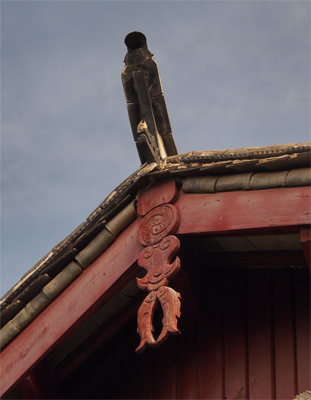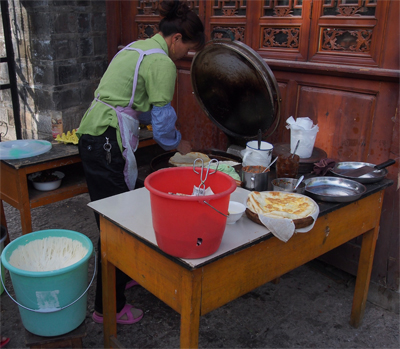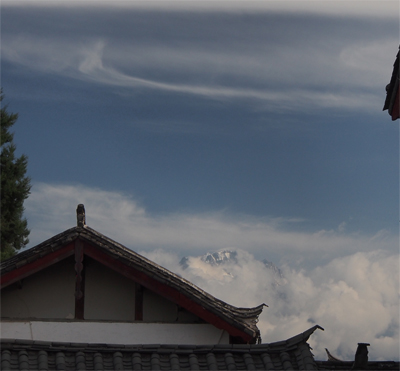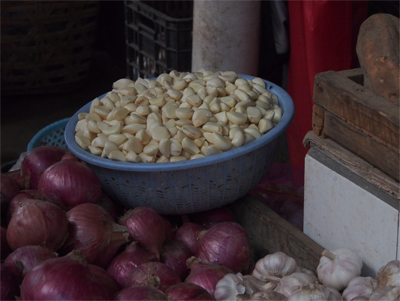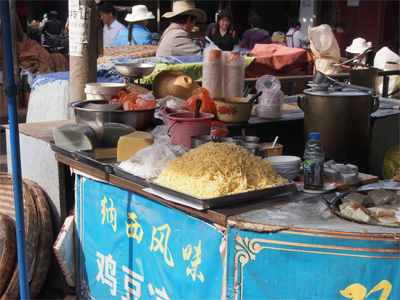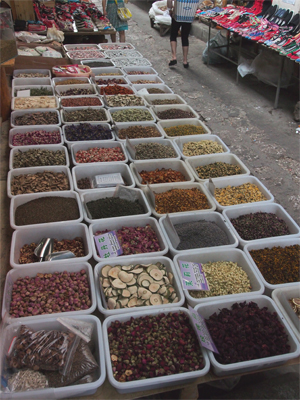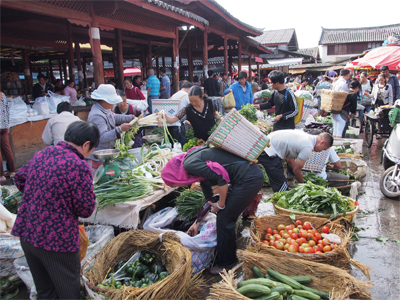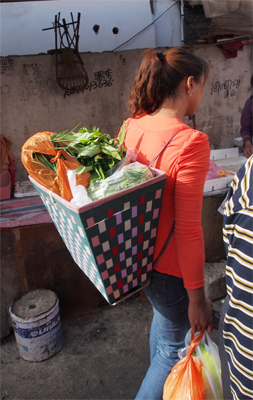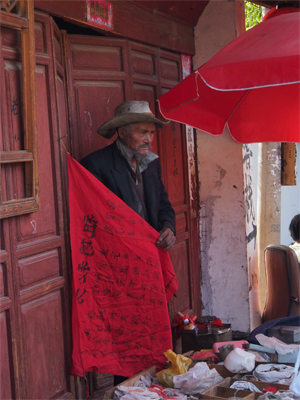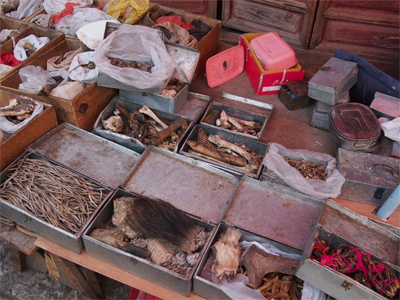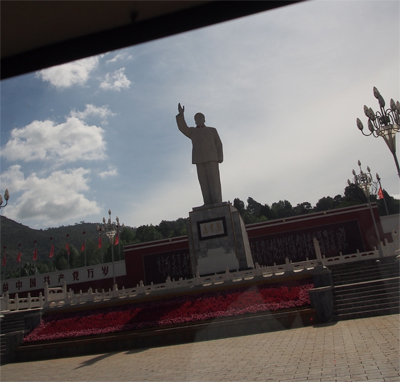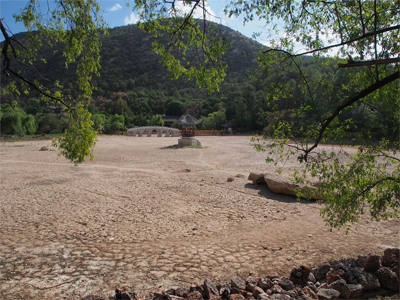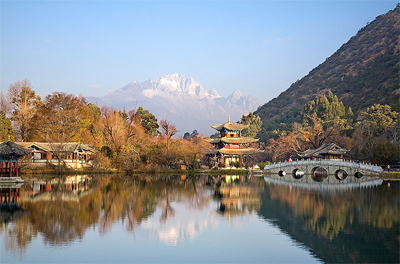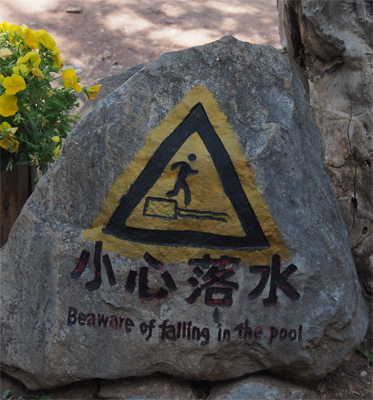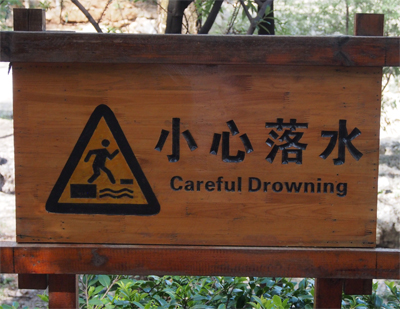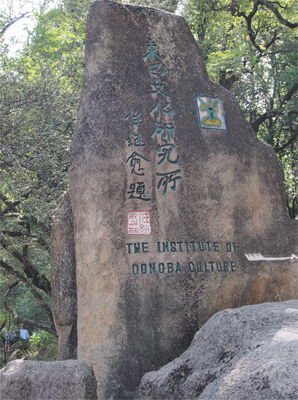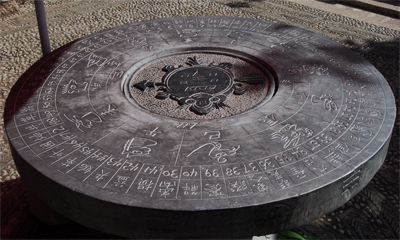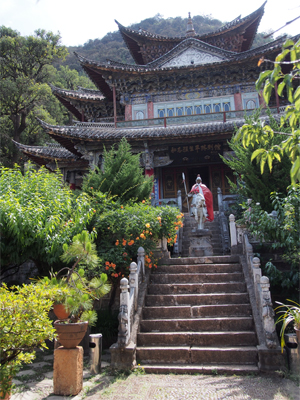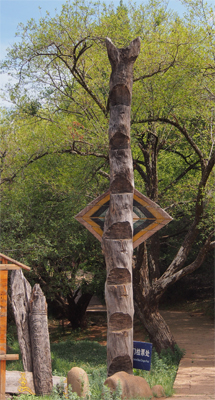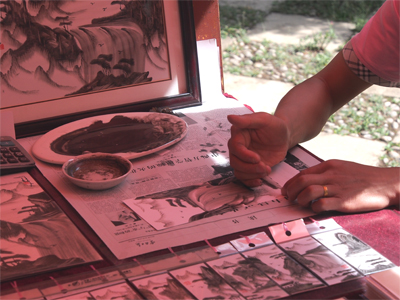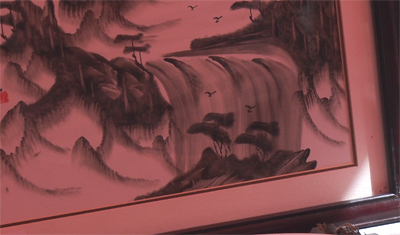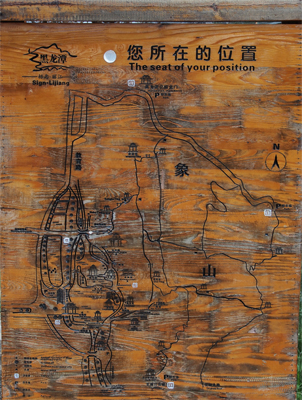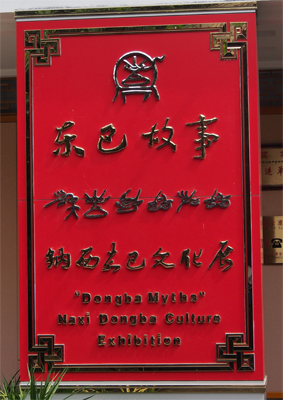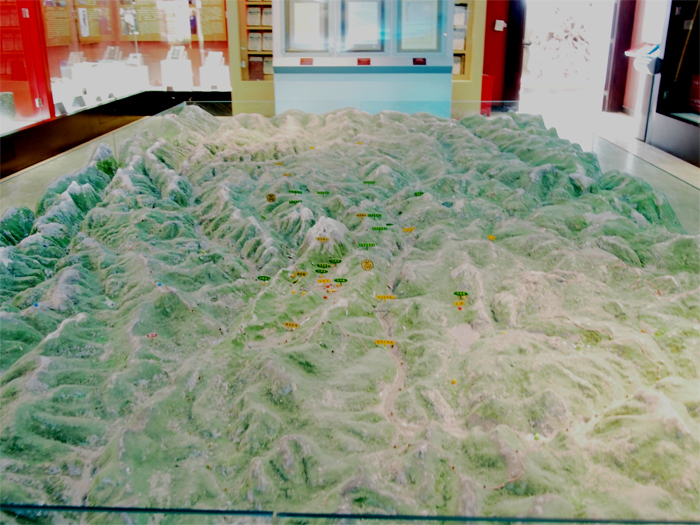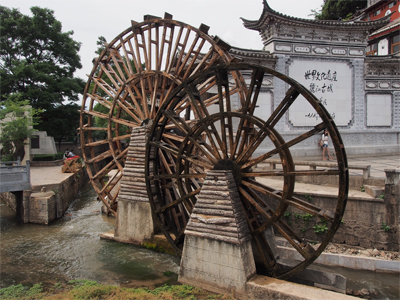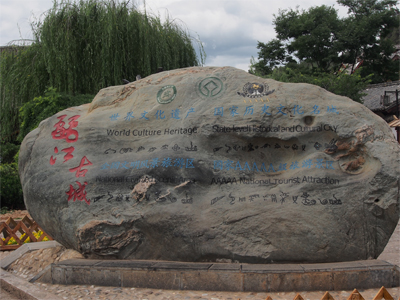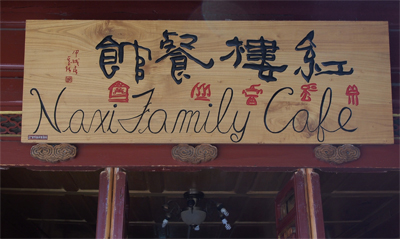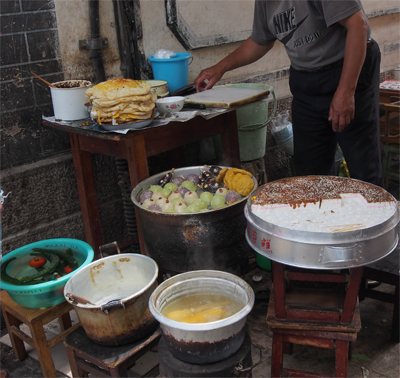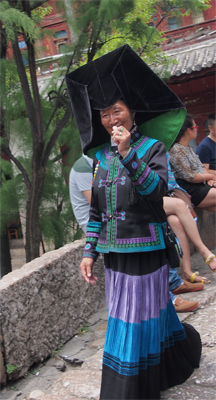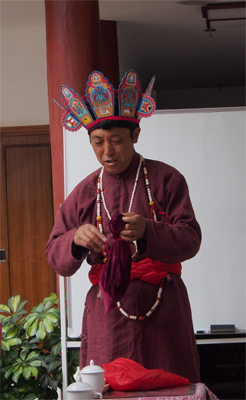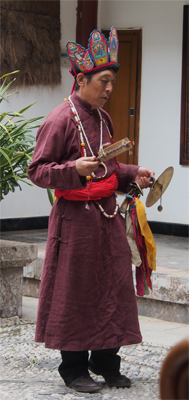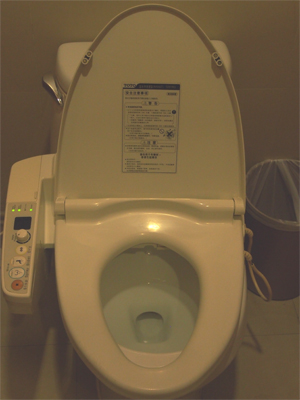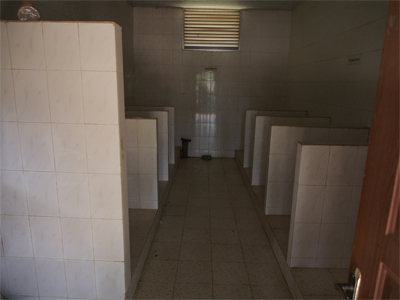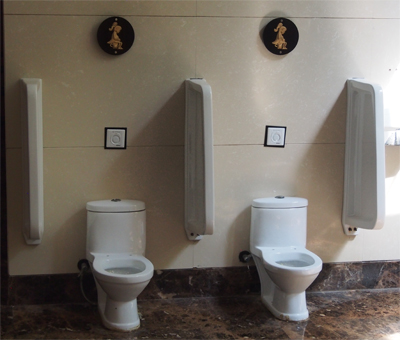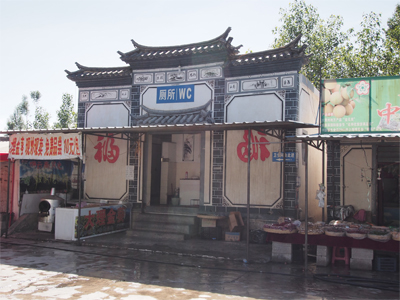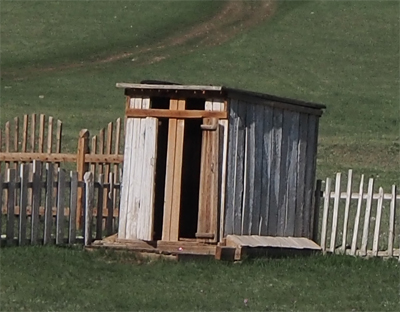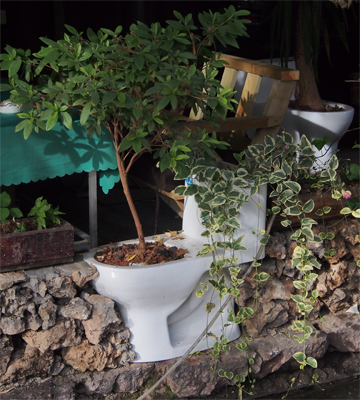Thurs., 6/20/13 - Lijiang
This morning we walked to the daily market in Old Town Lijiang. To get there we walked through a maze of pedestrian streets paved in stones and shared with motorbikes and horses. Shops and restaurants lined the streets. The market was huge and packed with people. Holly, our local guide, showed us a tea and mushroom shop. The Lijiang area grows more than 200 kinds of mushrooms and tea is made from all kinds of herbs and flowers - rose, chrysanthemum, and lavender were ones we recognized. This shop also stocked jars of herbal medicines. Out in the open we saw a medicine man selling more weird things like bear hair, monkey tail, deer foot, and sliced antlers.
Double fish symbol on the roof peak for luck
|
Street vendor serving breakfast - it looked good! |
Jade Dragon Snow Mountain trying to appear for us
|
Pealed garlic |
Cheese? |
Many things from which to make tea
|
Market activity |
Traditional carrying basket
|
Vendor selling animal parts as religious objects
|
His products |
Chairman Mao (from the bus window)
|
After the market, we headed to Black Dragon Pool Park. We entered through Civilization Gate and walked the path to the scenic lake, pagodas, and view of Jade Dragon Snow Mountain. Unfortunately, Lijiang is in a two-year drought and the mountain glaciers can't keep the lake full of water. Instead, it is a dry, cracked lake bed.
|
Black Dragon Pool Park
|
This is what it is supposed to look like (picture from the internet) |
Wonderful sign!
|
And yet another! |
Sign for Institute of Dongba Culture
|
Bazi wheel |
Five Phoenix Pavilion - Dragon Temple |
Totem pole
|
Palm painting
|
Palm painting |
Another great sign - "The seat of your position"
|
Dongba Culture Exhibition |
Relief map of the Lijiang area
|
|
As we walked back to the old town area for lunch, we were able to see more of the local sights. The city of Lijiang depends on a system of canals for its water supply. The water in these canals is moved by large, strategically placed, water wheels.
|
|
Water wheels
|
World Culture Heritage monument |
Lunch spot |
Desserts
|
Lady in costume (I took the picture before she said "no")
|
Back at our hotel we sat out in the courtyard for a lecture by a Dongba shaman, Mr. He Li Min. Mr. He explained that there are eight parts to the Naxi culture. No. 1 is the use of a shaman similar to a priest. He conducts ceremonies and rituals like naming a child when he is three days old, a maturity rite at age 13, wedding rituals at age 20 when yak butter is put on their heads, a longevity rite at age 60, and funerals. When someone is sick the shaman dances to drive away evil spirits - the Naxi culture does not use hospitals. No. 2 - the shaman is a scholar who writes and reads manuscripts, many of which are the stories of how the earth and animals were created. No. 3 includes the manuscripts, which preserve ideas and beliefs. No. 4 is Dongba music. They sing and chant twirling a hand drum and cymbal bell. No. 5 is Dongba dancing used at the rituals. No. 6 is painting, which is a very fine skill. No. 7 is craft works like using willow to make hangings, and No. 8 includes all the ceremonial rituals and fortune telling. His presentation was excellent.
|
Naxi shaman
|
Naxi shaman |
Fri., 6/21/13 - Lijiang to Kunming to Beijing
|
|
Prior to our departure for this trip, everyone was asking "What about the bathrooms? How are you going to deal with the squat toilets in China?" etc. Well, first of all, a lady on our Antarctica trip who heard us say we were going to Mongolia came over to say we needed to get some Travel John disposable urinals, especially for the ger camps in Mongolia where the bathrooms were in the lodge some distance from our ger. Another handy product is the Freshette, sold by REI and others. Strengthening leg muscles is a third option. So, armed with all of these, we were prepared for China and Mongolia.
|
|
|
We found this style of toilet in our hotel room in Ulaanbaatar. The heated seat had to be turned down as it was too hot for comfort. Neither of us used any of the other included amenities. |
In this style, the opening necessitates that you face the person in the stall across from you. We also encountered a similar arrangement where the opening was perpendicular to the stall wall so everyone faced either forward (toward the stall wall) or backward.
|
This style was found just inside the door at the Stone Forest in Kunming. It is probably intended for children's use as there were more private (a relative term) cubicles. |
Don't be deceived into thinking this might be a Western-style facility. It wasn't!
|
This represents the typical Mongolian style facility found everywhere except in hotels and restaurants. It is characterized by a pit with a couple boards on either side and a door which probably won't close.
|
Does this suggest what Chinese think is the best use for a Western toilet?
|
We did manage just fine (some days you don't drink too much coffee in the morning) and the Travel Johns came in handy.
|
